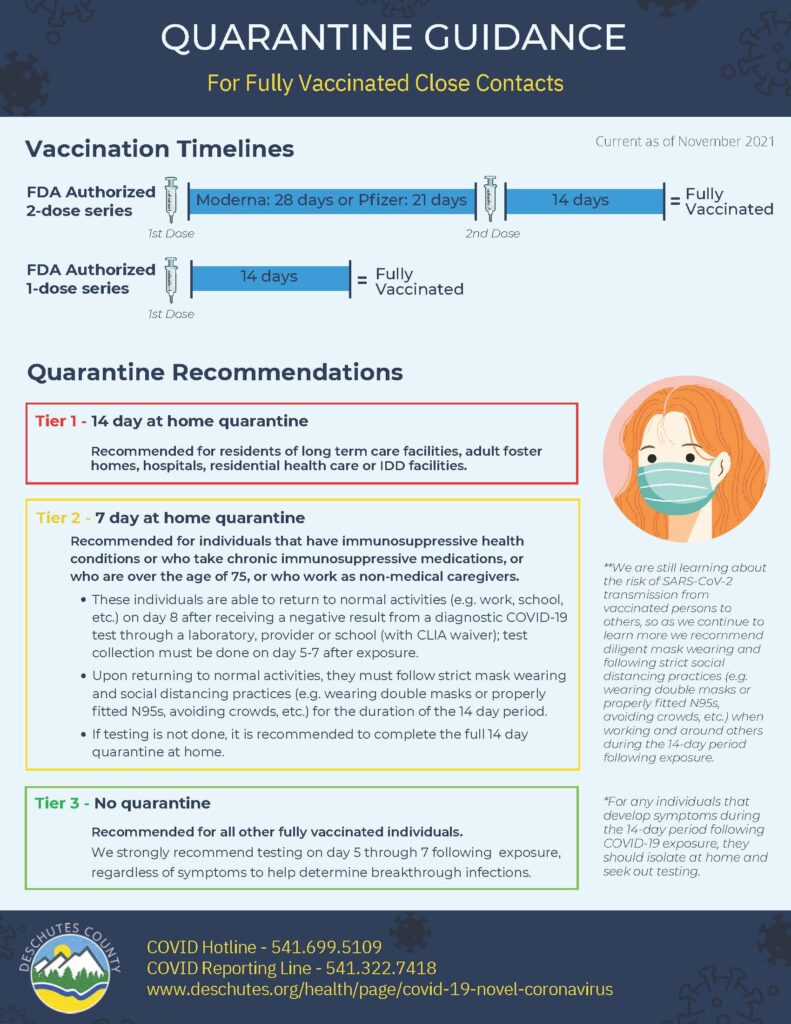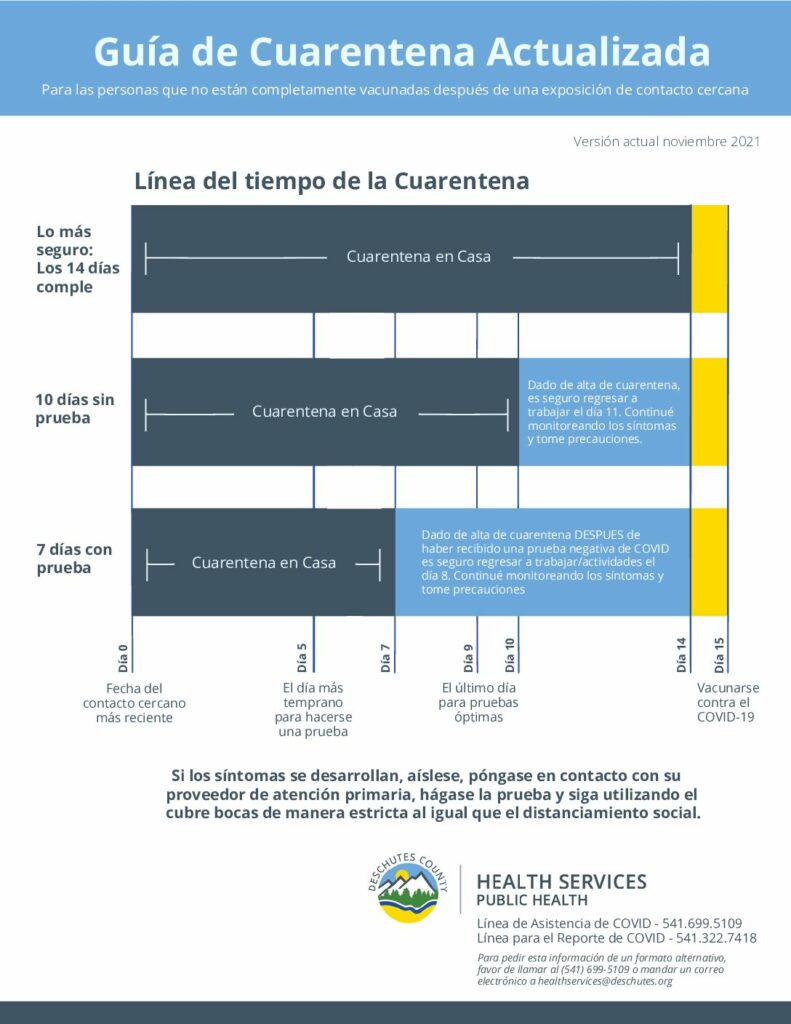What to Do if You or an Employee Tests Positive for COVID-19—CDC Guidelines for Isolation and Quarantine
Quarantine vs. Isolation
- You quarantine when you might have been exposed to the virus and may or may not have been infected.
- You isolate when you are sick or when you have been infected with the virus, even if you don’t have symptoms.
ISOLATION:
Isolate for 10 days starting with the first day of symptom onset (or for asymptomatic individuals, the day of a positive test result).
If after 10 days the person has been free of fever for 24 hours (without the use of fever-reducing medications) and other symptoms of COVID-19 are improving, they can return to normal activities.
QUARANTINE:
Close Contact is defined as contact (within a distance of 6 feet or less – mask or no mask) with a COVID infected person for 15 minutes or more within a 24-hour period. An infected person can spread SARS-CoV-2 starting from 2 days before they have any symptoms (or, for asymptomatic people, 2 days before the positive specimen collection date) until the end of their 10 day isolation period.
Unvaccinated Individuals
- 1–14 days with no symptoms. Can resume normal activities on day 15.
- 2–10 days with no symptoms. Can resume normal activities on day 11.
- 3–7 days with no symptoms and a negative COVID test (sample obtained on day 5-7). Can resume normal activities on day 8.
Deschutes County Health Services recommends the 14-day quarantine because it is the safest option.
Vaccinated Individuals
Fully vaccinated individuals do not have to quarantine but should get tested 5-7 days after their exposure, even if they don’t have symptoms. They should also wear a mask indoors in public for 14 days following exposure or until their test result is negative.
The latest information can be found on the CDC website.










0 Comments